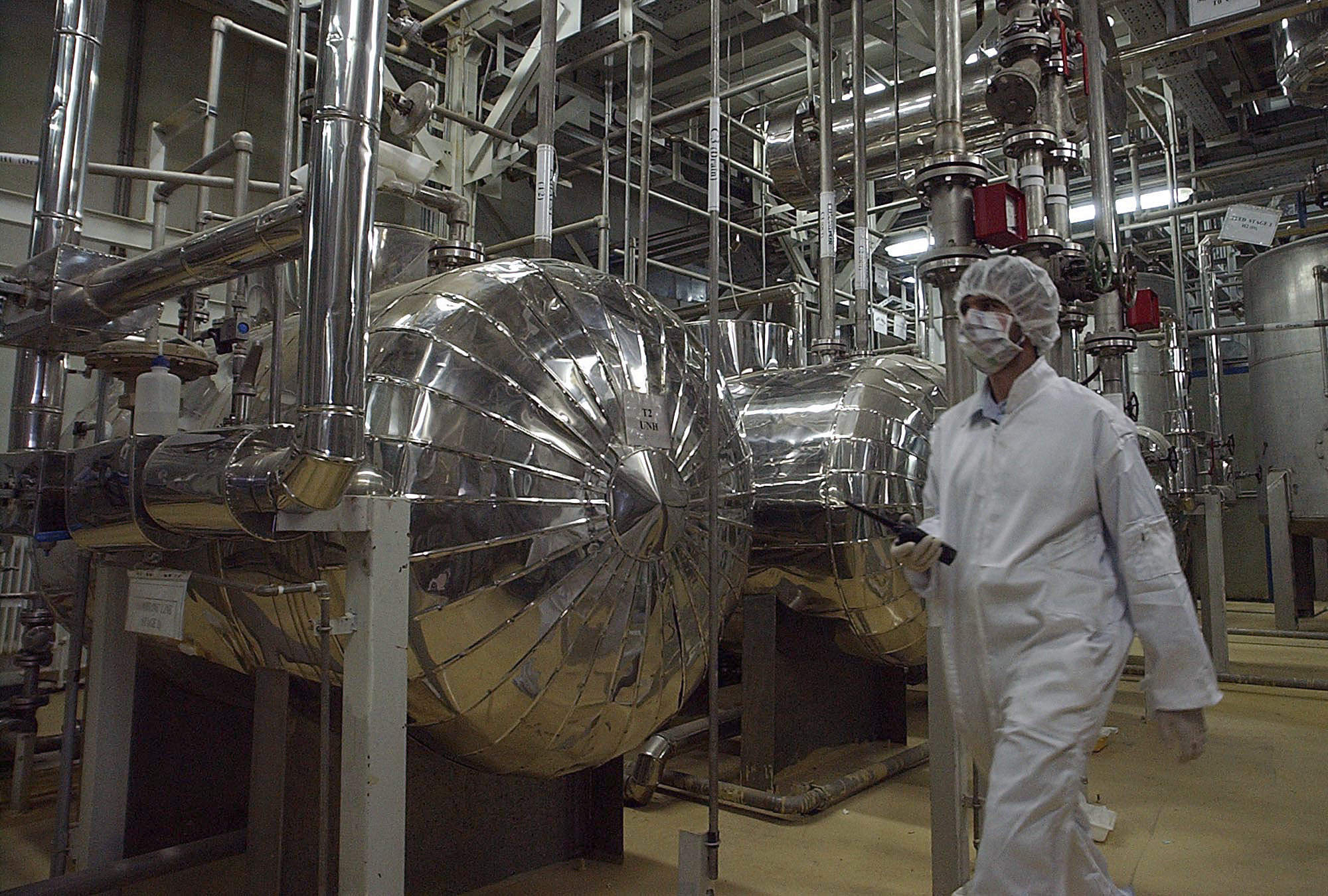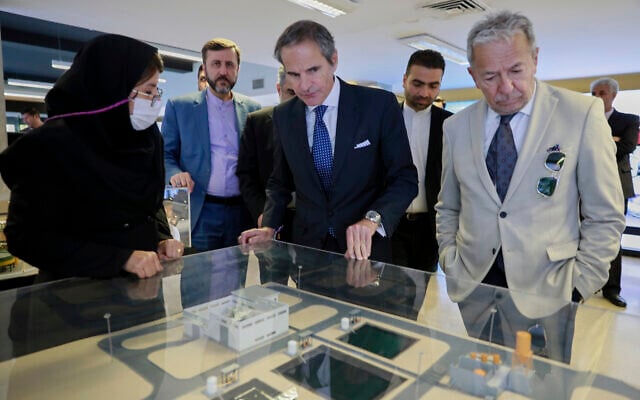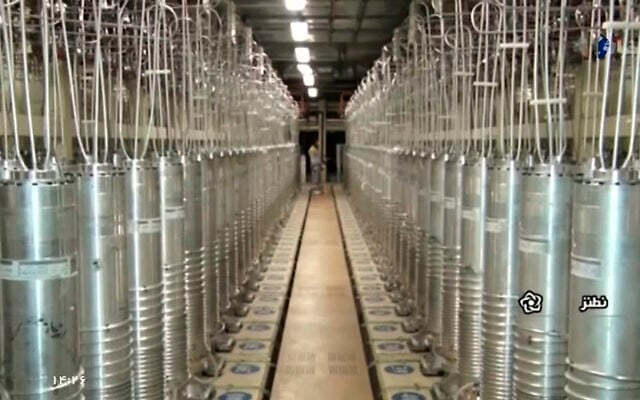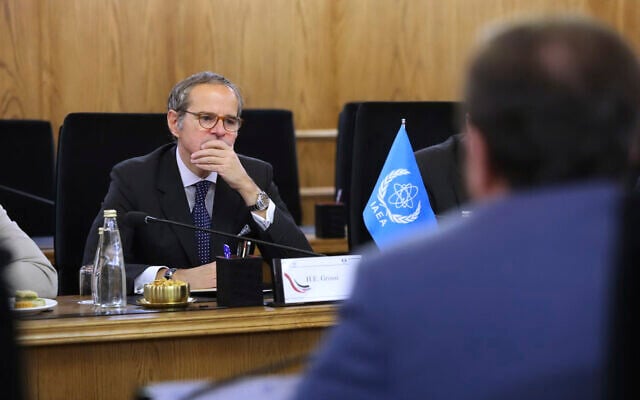



The International Atomic Energy Agency’s May 31 report on Iran’s nuclear activities over the years revealed that more than two decades ago, the Islamic Republic conducted and covered up several implosion tests, a key step in the process of developing a nuclear weapon, an analysis of the report found.
According to the Washington, DC-based Institute for Science and International Security (ISIS) think tank, which analyzed and published key points from the IAEA report and released its findings on June 6, the activities carried out by Iran were in preparation for a “cold test,� one of the final steps in the development of a nuclear bomb.
Cold tests are conducted with a fully assembled nuclear device, but with a core of natural or depleted uranium, rather than one of weapons-grade uranium.
The think tank said that its analysis of the IAEA report revealed that in 2003, prior to the formal closure of Iran’s nuclear program, Tehran had carried out “a number of” implosion tests at a nuclear facility near Marivan, in central Iran.
Related: IAEA report spells out Iran’s secret nuclear activities
It said that of the implosion tests, four utilized “‘full-scale hemispherical implosion systems,’ involving the initiation of high explosives, with the generation of a spherically inward shock wave, and a resulting compression of a nuclear explosive core, minus the weapons-grade uranium and [explosively driven neutron sources].”
Following the successful implosion tests, Iran had intended to proceed with cold tests and had been conducting blast shielding tests in preparation. The think tank said it was unclear whether the cold tests went ahead at Marivan, or at any other nuclear facility.
The Marivan facility consisted of an “outdoor high-explosive testing site and support area,” the think tank said, and it was used primarily for large-scale explosive tests.
The Marivan site was “sanitized” in 2019, ISIS said, apparently after the IAEA requested access to it.
“While the IAEA visited the Marivan support area and outdoor explosive test site in August 2020, the IAEA states it was not able to access the control bunker during the visit,” the DC think tank said. “Iran subsequently demolished the bunker.”
Three other nuclear facilities in addition to Marivan have been under investigation by the IAEA since 2019 — Lavisan-Shian, Varamin, and Turquz-Abad.
These four facilities, along with “other possible related locations,” formed the heart of Iran’s “undeclared structured nuclear program,” far beyond the supposed end of its formal program in 2003, ISIS found, adding that the IAEA report had confirmed for the first time that these sites were directly connected to missing nuclear material in Iran.
The Lavisan-Shian base, it said, was the former headquarters of Iran’s nuclear program, and was established by the Physics Research Center, an Iranian military institute that provided personnel, equipment and material to the nuclear program.
The site was primarily used by Iran for the production of explosively driven neutron sources (EDNS), which are used in the center of implosion-type nuclear weapons. The uranium metal used for the EDNS production was taken from an estimated 10 kilos of undeclared uranium metal stored by Iran at its Jaber Ibn Hayan Multipurpose Laboratory (JHL), it said.
The undeclared uranium has become untraceable, the IAEA said, and it was unclear whether it has been entirely used or mixed in with declared uranium.
The Lavisan-Shian site was “sanitized” by Iran in late 2003 and early 2004, the IAEA found, making it impossible for the atomic agency to conduct environmental sampling at the scene and leaving gaps in its assessment and understanding of the work that occurred there.
In contrast, it said that the 2004 sanitation of the Varamin facility had been less thorough, and agency workers found man-made uranium particles when accessing the site in 2020.
Based on its findings, the IAEA was able to create a rough timeline of activity at Varamin.
The site was established in 1997, it said, and the equipment used there had been consistent with that which is found in a uranium conversion facility.
Among the equipment, which the IAEA said was all “essential equipment for a uranium conversion facility,” were a number of uranium hexafluoride cylinders.
Uranium hexafluoride, or UF6, is an inorganic compound used in the uranium enrichment process.
The cylinders were all heavily contaminated, ISIS said, and some were still full of UF6.
The Varamin site was only operational for a few years, the IAEA said, and by late 2003, all equipment and material, including nuclear material, had been removed from the facility in 13 different shipping containers, organized according to contamination levels.
The equipment from Varamin was sent to the Turquz-Abad facility, described by ISIS as an open-air warehouse.
After the Varamin site was dismantled, ISIS said IAEA noted that Iran had planned to replace it with a new production-scale facility, codenamed the New Tehran Plant.
It said the IAEA had no information on whether the facility was ever built, but that if it was, it was almost certainly after the 2003 shutdown of Iran’s nuclear program.
Nuclear material and equipment from JHL, and possibly from Lavisan-Shian, were also stored at the Turquz-Abad site, the IAEA found. It said that it was able to conclude with the use of satellite footage that the warehouse was actively being used, with containers coming and going, until as recently as 2018.
The warehouse’s existence was made public in 2018 when Prime Minister Benjamin Netanyahu revealed it at the UN, calling it a clandestine nuclear warehouse hidden at a rug-cleaning plant.
As with the Varamin plant, ISIS said the IAEA found traces of man-made uranium particles at the Turquz Abad site in 2020.
Summarizing the findings of the IAEA report, ISIS accused Iran of going to extreme lengths to “sanitize locations of interest to the IAEA and provide false information when faced with questions,” obstructing the nuclear watchdog’s work.
It said that given the IAEA’s findings, a draft resolution finding Iran in noncompliance with safeguard obligations that the US and the E3 — France, Germany, and the UK — plan to submit at an IAEA meeting should also refer Iran’s case to the UN Security Council for action.
“A referral to the UN Security Council need not in any way end the IAEA’s effort to obtain answers from Iran; in fact, it should enhance the IAEA’s quest for answers,” wrote the think tank.
“Whether or not the resolution contains an explicit referral to the UN Security Council, the E3 should trigger the reimposition of UN Iran sanctions via the snapback procedure outline in the Joint Comprehensive Plan of Action,” ISIS recommended. “This action would also cause the return of the UN Security Council’s demand that Iran end its uranium enrichment program.”
The release of the IAEA report last month coincided with ongoing US efforts to sign a new nuclear deal with Iran, after US President Donald Trump pulled out of the JCPOA in 2018. Plans to find Iran in noncompliance as a result of the report’s findings could complicate the nuclear talks.
Iran, which avowedly seeks Israel’s destruction, has consistently denied seeking to acquire nuclear weapons.
But a separate IAEA report sent to member states last month found that Iran had 408.6kg of uranium enriched to up to 60% purity — close to the roughly 90% of weapons grade. That is enough, if enriched further, for nine nuclear weapons, according to an IAEA yardstick.
The enriched uranium has no peaceful application.
According to the IAEA, Iran is the only non-nuclear-weapon state in the world that enriches uranium up to 60%, a level that has no civilian use. That rate is still just below the 90% threshold required for a nuclear weapon, but far above the 3.67% limit set under the 2015 JCPOA agreement with world powers.
Times of Israel staff contributed to this report.




